Day #8 Nuremberg, Germany (Page Thirteen)
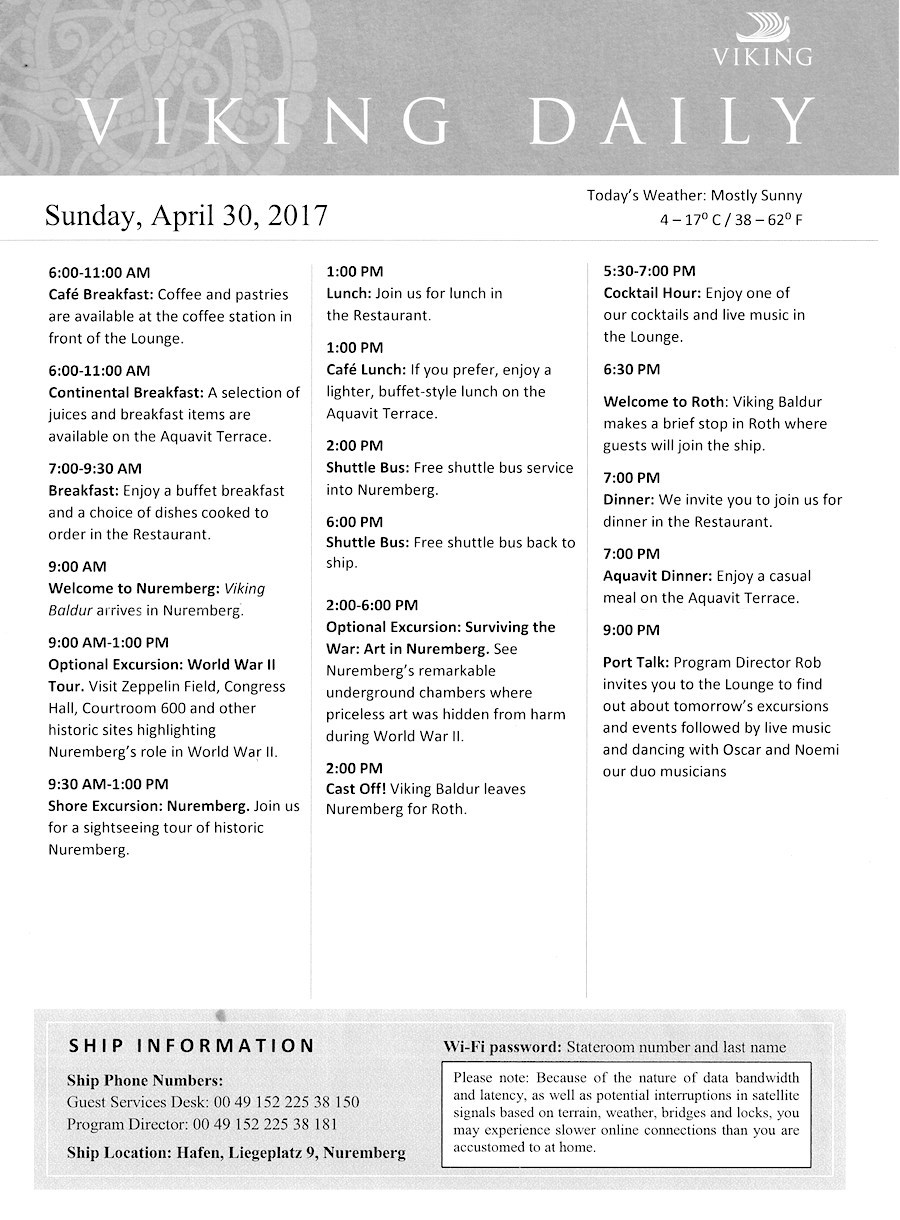
After an all night sail be traveled the 37 miles from Bamberg to Nuremberg arriving and debarking at 9:00 AM. The ship departed Nuremberg mid afternoon, 2:00 PM and arrived at Roth at 6:30 PM.

40 peaceful miles overnight
Did You Know? - Nuremberg held great significance during the Nazi Germany era. Because of the city's relevance to the Holy Roman Empire and its position in the center of Germany, the Nazi Party chose the city to be the site of huge Nazi Party conventions — the Nuremberg rallies.
The rallies were held 1927, 1929 and annually 1933–1938 in Nuremberg. After Adolf Hitler's rise to power in 1933 the Nuremberg rallies became huge Nazi propaganda events, a center of Nazi ideals.
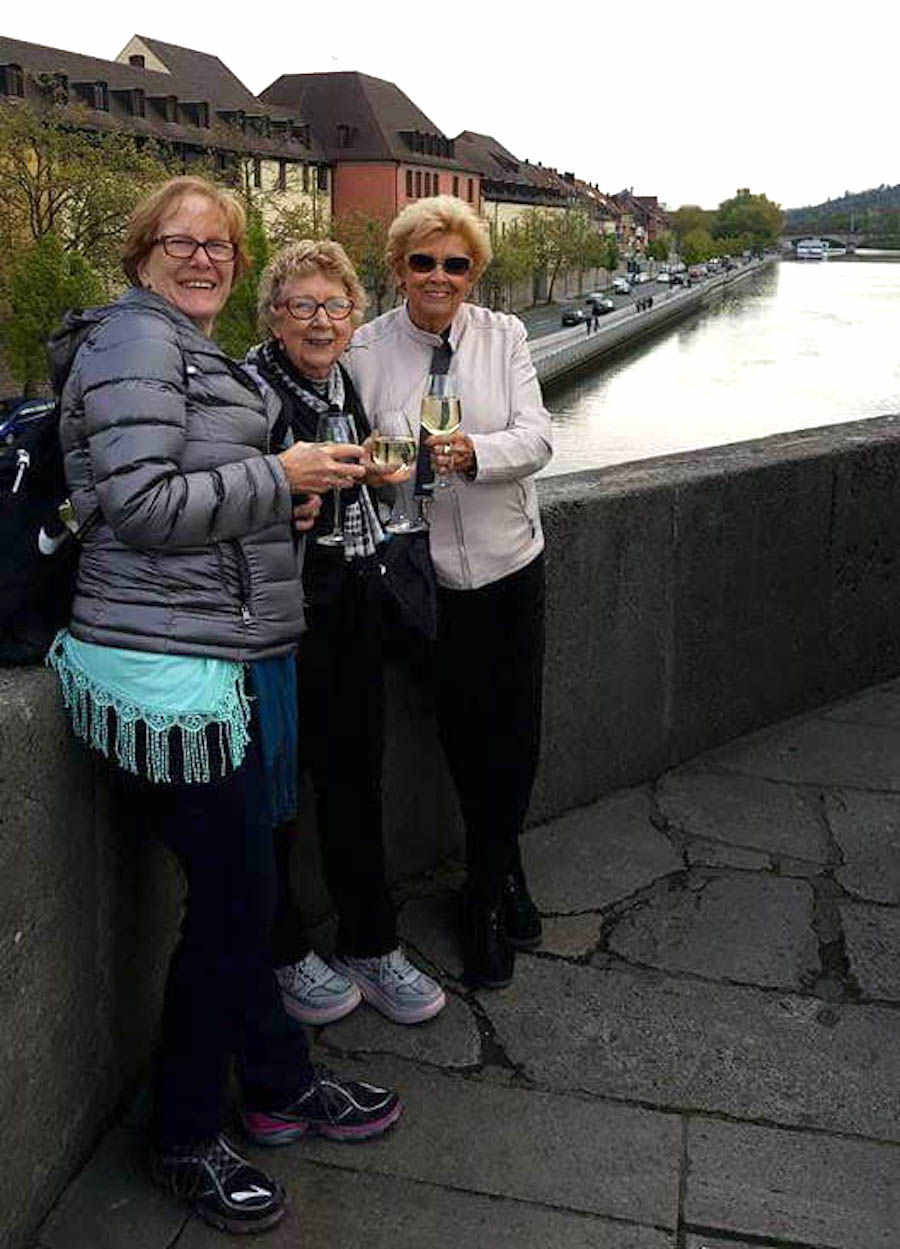
Watching the world go by with a nice glass of vino

Time for a bus ride

Beautiful city

The bus rides were quite comfortable...
Large windows in most bussed

Loads of parks
 The Rhine–Main–Danube Canal is prominent within the city
The Rhine–Main–Danube Canal is prominent within the city
Did You Know? - The Rhine–Main–Danube Canal (German: Rhein-Main-Donau-Kanal; also called Main-Danube Canal, RMD Canal or Europa Canal), in Bavaria, Germany, connects the Main and the Danube rivers across the European Watershed, running from Bamberg via Nuremberg to Kelheim.
The canal connects the North Sea and Atlantic Ocean to the Black Sea, providing a navigable artery between the Rhine delta (at Rotterdam in the Netherlands), and the Danube Delta in south-eastern Romania and south-western Ukraine (or Constanța, through the Danube–Black Sea Canal). The present canal was completed in 1992 and is 171 kilometers (106 mi) long.


Nazi Party Rally Grounds
Did You Know? - The Nazi party rally grounds (German: Reichsparteitagsgelände, Literally: Reich Party Congress Grounds) covered about 11 square kilometers in the southeast of Nuremberg, Germany. Six Nazi party rallies were held there between 1933 and 1938.

Click for a full sized image of the Congress Hall
Did You Know? - The Congress Hall (Kongresshalle) is the biggest preserved national socialist monumental building and is landmarked. It was planned by the Nuremberg architects Ludwig and Franz Ruff. It was intended to serve as a congress center for the NSDAP with a self-supporting roof and should have provided 50,000 seats.
It was located on the shore of and in the pond Dutzendteich and marked the entrance of the rally grounds. The building reached a height of 39 m (128 ft) (a height of 70 m was planned) and a diameter of 250 m (820 ft).
The building is mostly built out of clinker with a facade of granite panels. The design (especially the outer facade, among other features) is inspired by the Colosseum in Rome.
The foundation stone was laid in 1935, but the building remained unfinished and without a roof.

Amazing architecture
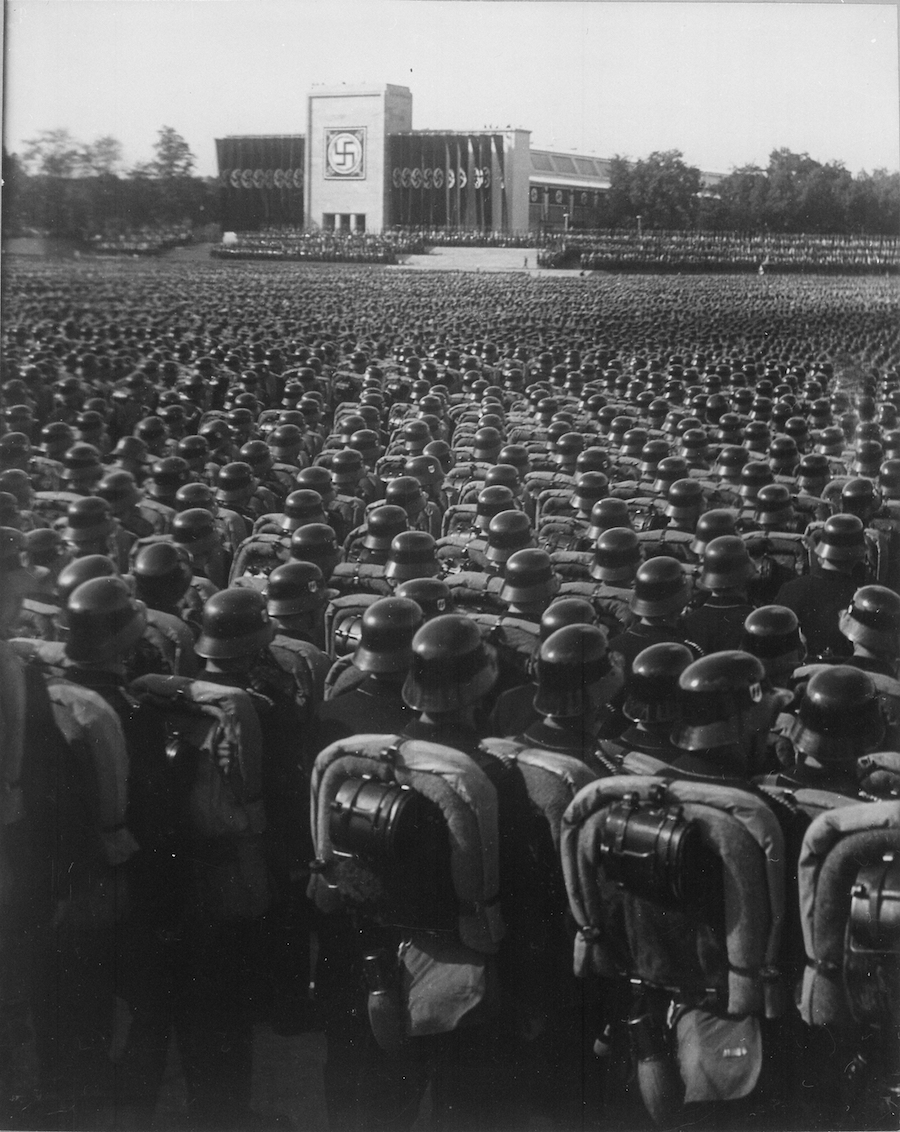
Glad those times are gone... Mostly gone!

The ralley grounds are huge so we rode around the outside

Masonry seems to be a choice building material

Central train station is always busy
Did You Know? - Nürnberg Hauptbahnhof (German for Nuremberg main station) or Nuremberg Central Station is the main railway station serving the city of Nuremberg in Germany.
It is the largest station in north Bavaria and belongs to the 20 stations in the highest category of importance allocated by DB Station&Service.
It is a through station with 21 platforms and lies on major north–south and east–west transportation axes. It offers connections to the major German cities of Leipzig, Berlin, Augsburg, Ingolstadt, Munich, Würzburg, Frankfurt and Regensburg, as well as Linz and Vienna in Austria and Prague in the Czech Republic.
Over 450 trains stop here daily and more than 180,000 passengers use the station on average every day. It is also a major hub for public transport in Nuremberg.

It has been around for quite a while... Circa 1900
Did You Know? - As a result of allied bombing at the end of the Second World War the station building, with the exception of the Jugendstil lounge suffered heavily and on 16 March 1945 had to be closed for nine days. Its reconstruction took place between 1945 and 1956 and had to be simplified due to a lack of money.
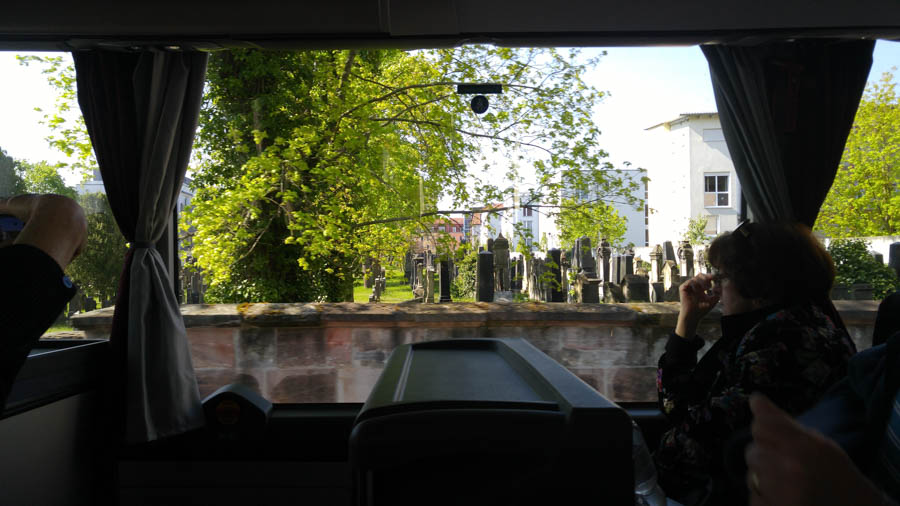
The cemeteries are sprinkled around their town


Did You Know? - Nuremberg Castle (German: Nürnberger Burg) is a group of medieval fortified buildings on a sandstone ridge dominating the historical center of Nuremberg in Bavaria, Germany.
The castle, together with the city walls, is considered to be one of Europe's most formidable medieval fortifications. It represented the power and importance of the Holy Roman Empire and the outstanding role of the Imperial City of Nuremberg.

Beautifully maintained grounds

Once upon a time it served at a moat!

From the top you can see the entire town

Close together?

Nuremberg in 1492 as Columbus sailed to America?
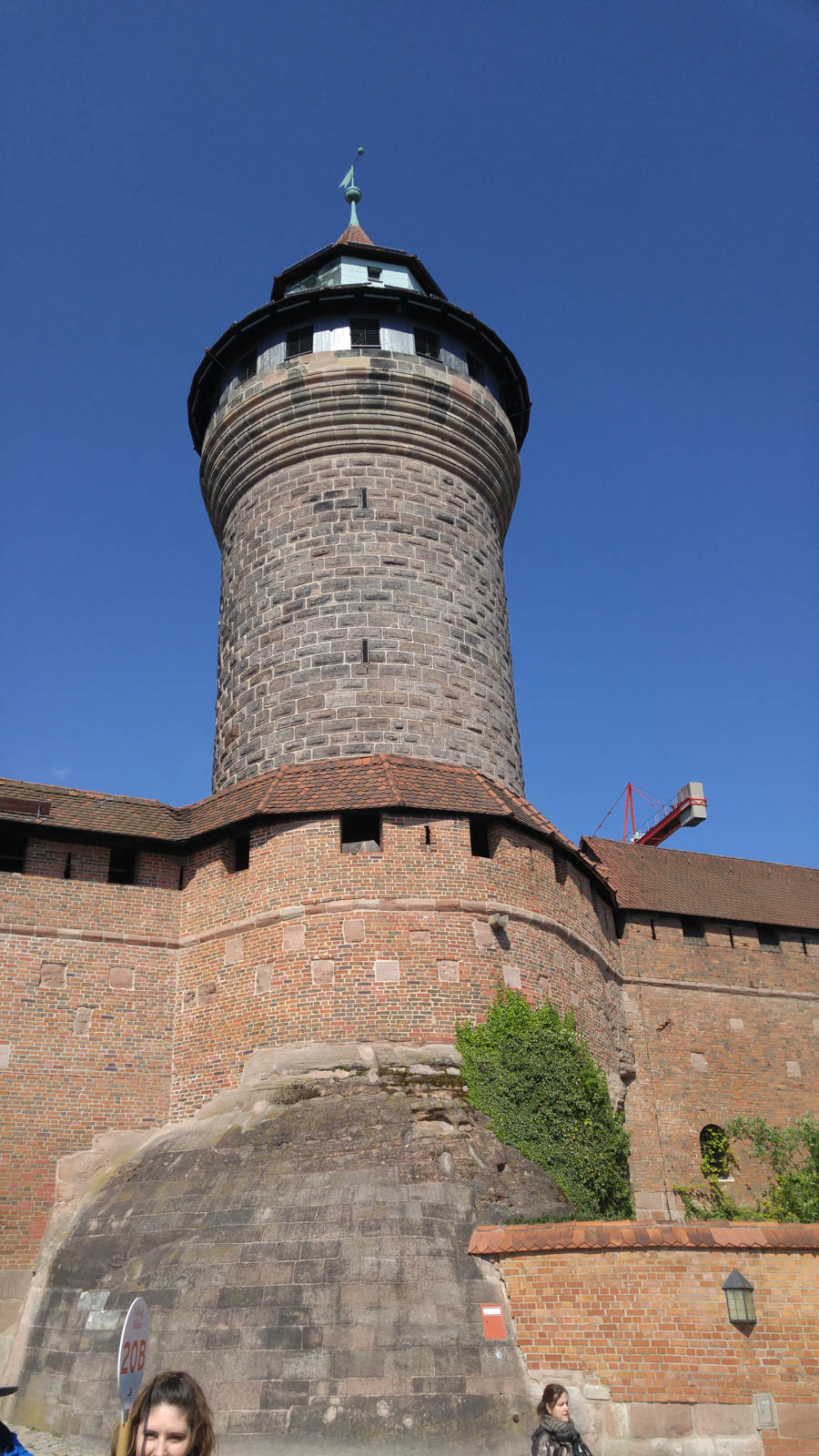
Indeed heavily fortified!

Some of the ancient wall can still be seen from the top of the fortification
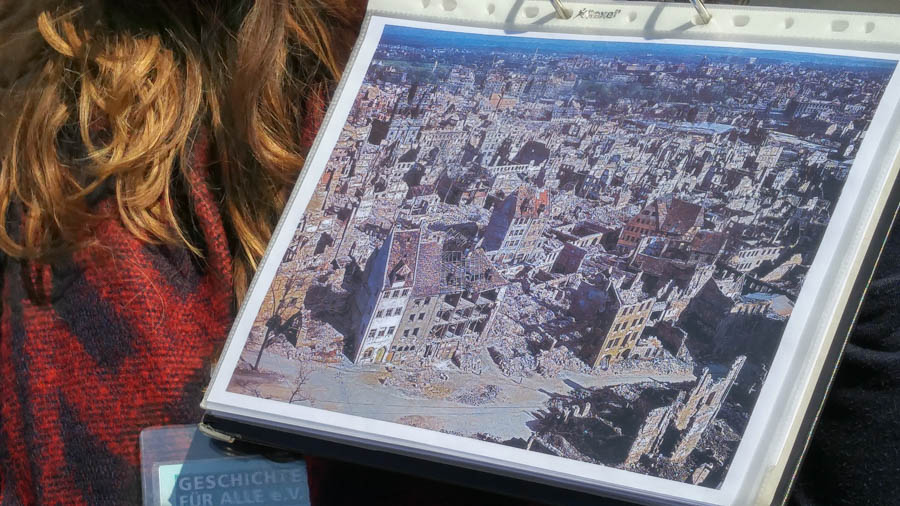
Amazing it survived the WWII damage
Did You Know? - During the Nazi period, in preparation of the Nuremberg party rally in 1936, it was "returned to its original state." A few years later, during World War II and its air raids in 1944/1945, a large part of the castle was laid in ruins. It took some thirty years to complete the rebuilding and restoration to its present state.

Done without modern machinery... Mind boggling!
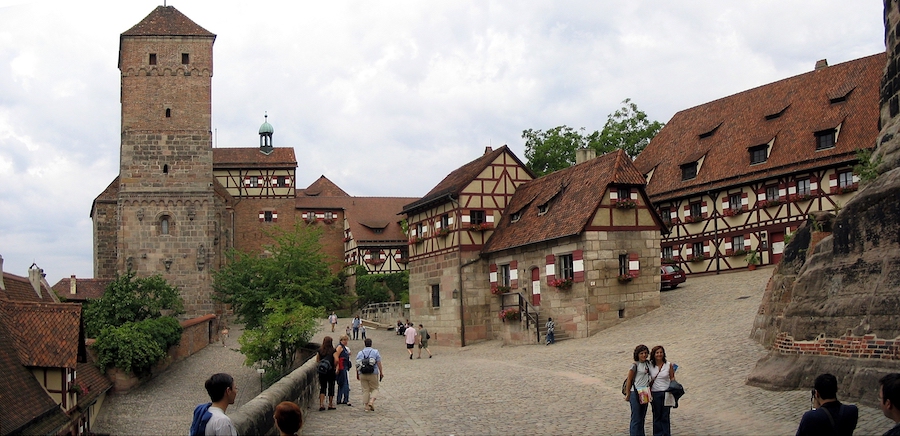
Click for full sized image of the Imperial Chapel

Repairs are constantly underway

Did You Know? - The Maria Sibylla Merian Garden is located between the Heidenturm and the Himmelsstallung. Protected by framing walls, a small garden idyll presents itself with a beautiful view of Nuremberg.
The garden was named after the famous artist and naturalist Maria Sibylla Merian (1647-1717), who lived and worked in Nuremberg for 14 years . It is one of the outstanding personalities of the 17th and early 18th century. Her house was in the immediate vicinity of the Kaiserburg Nuremberg, and she could use this small garden for her flower and insect studies.
Over the centuries, the garden has always been used as a green space. Changes and demolitions led to a modern redevelopment in 2013. Today, the garden divides itself into a walkway and square, and on the other, a large lawn, which is intended to emphasize the character of a garden. Lawns of different lengths are drawn into this lawn from the edges. In the lower level there is also a small well basin. The newly used materials blend well into the historical environment through their subtle color and adapted processing.
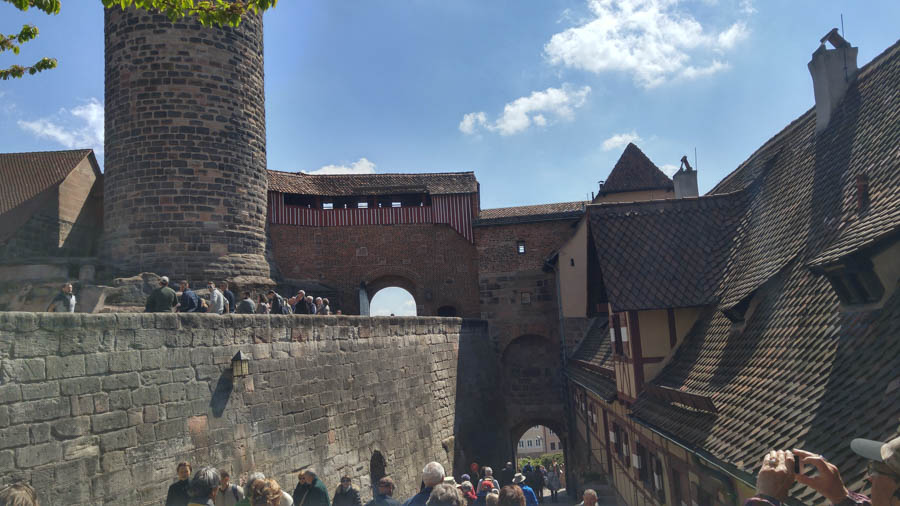
It was a busy day

To see things up close you had to climb the hills

A quick walk back to town we stopped to see the Stadtmuseum

Did You Know? - Nuremberg's only surviving large Late Renaissance merchant's house – halfway up the hill to the Imperial Castle – invites visitors to experience a trip through the city's past. Priceless original rooms, staged settings and audio plays bring 950 years of Nuremberg's history to life. The Exhibition Forum, with its changing presentations, is a showcase for the city's history, art and culture.

Very well preserved

A short walk to the river
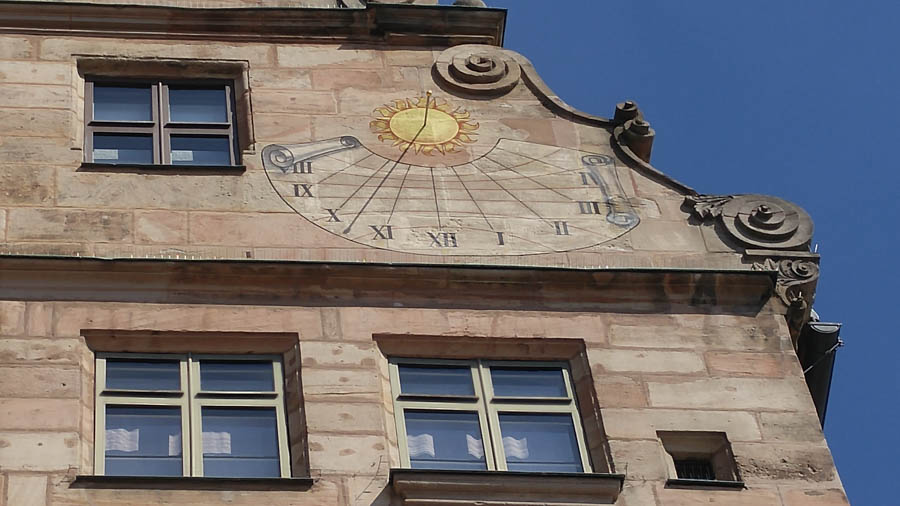
The sundial tells all!
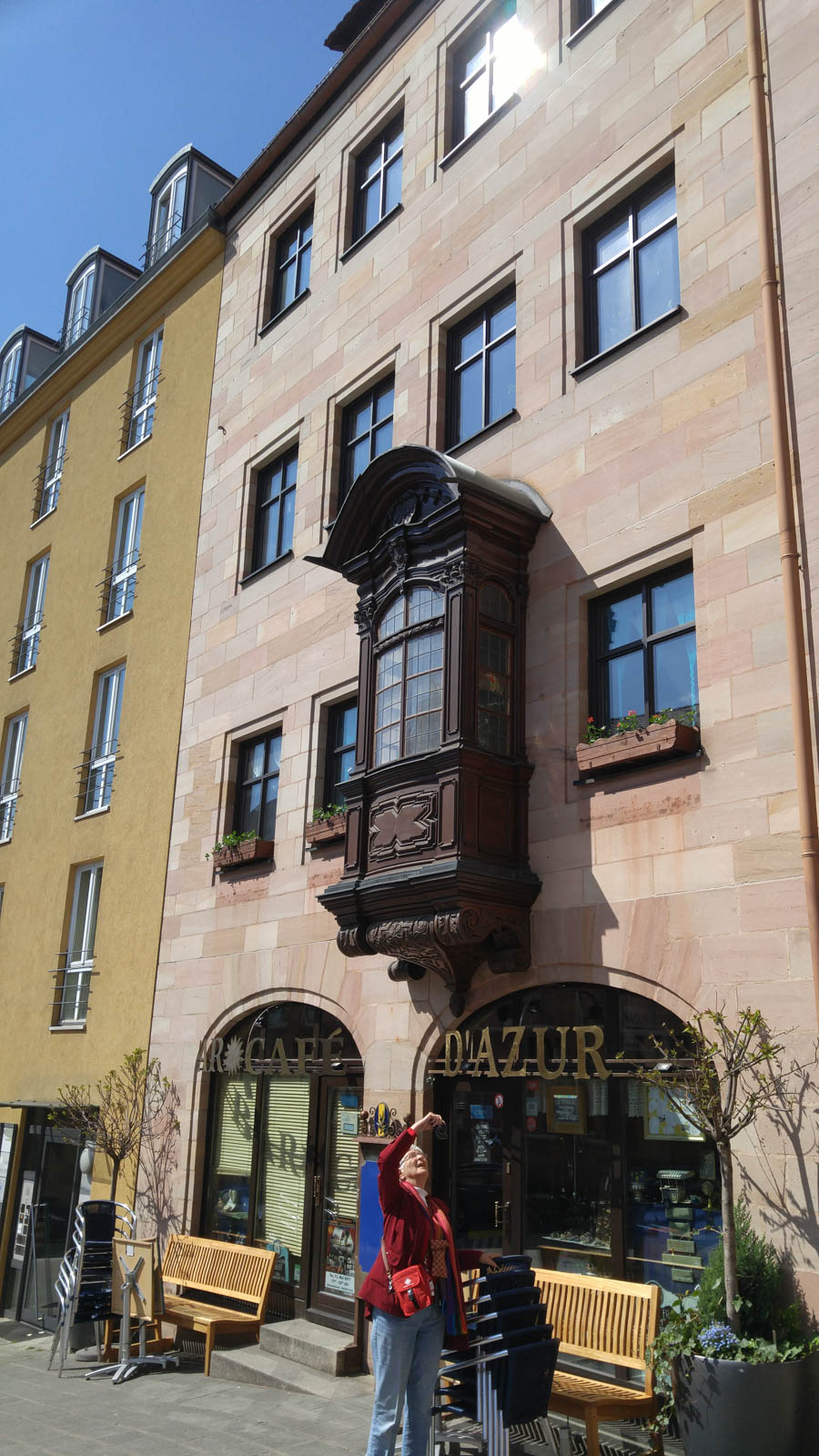
"It's a bird... It's a plane... It's super tourist!"

The Stadtmuseum to the Church was a long block of walking
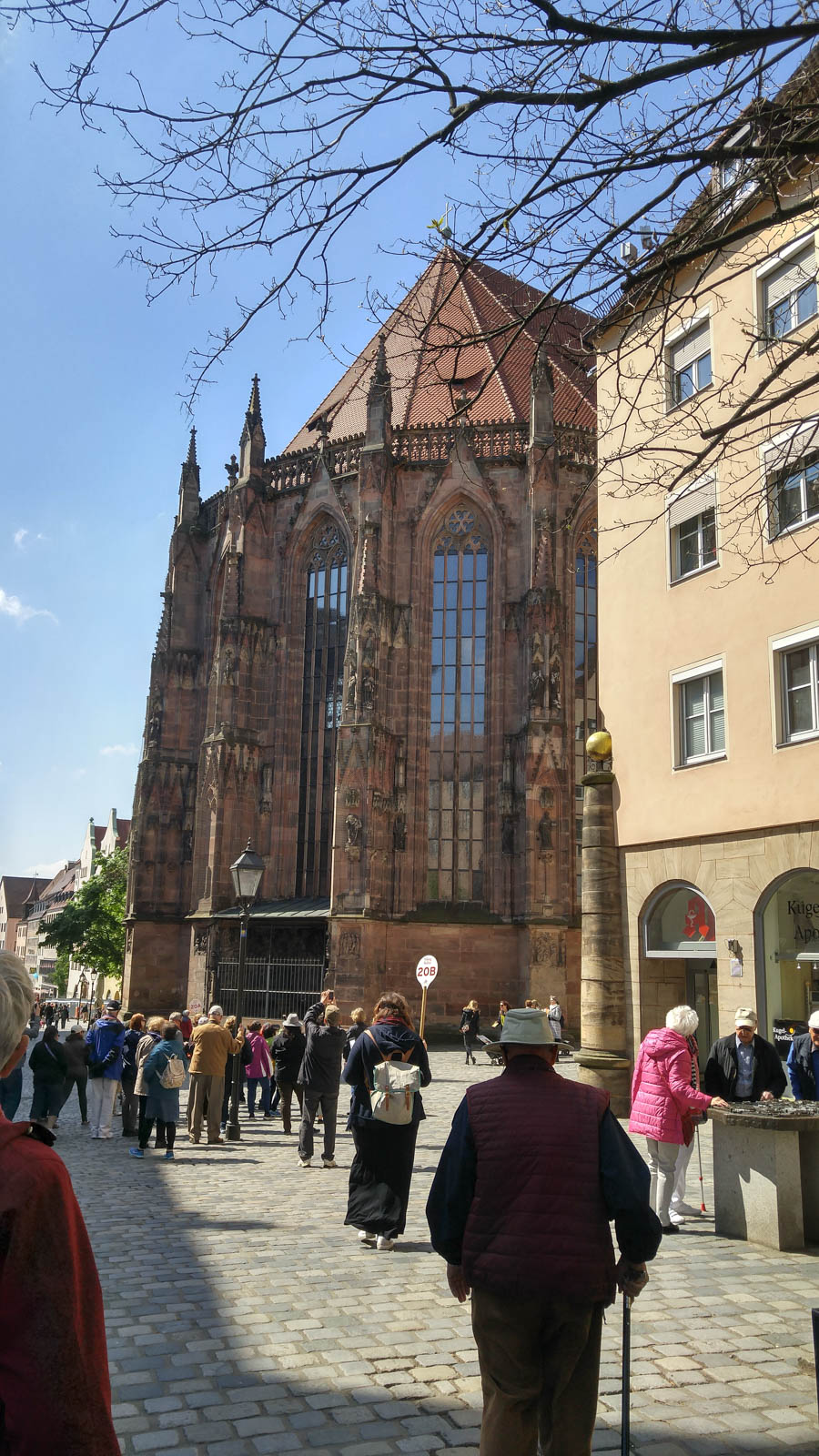
St. Sebaldus Church
Did You Know? - St. Sebaldus Church (St. Sebald, Sebalduskirche) is a medieval church in Nuremberg, Germany. Along with Frauenkirche (Our Lady's Church) and St. Lorenz, it is one of the most important churches of the city, and also one of the oldest. It is located at the Albrecht-Dürer-Platz, in front of the old city hall. It takes its name from Sebaldus, an 8th-century hermit and missionary and patron saint of Nuremberg. It has been a Lutheran parish church since the Reformation.

Huge stained glass windows

Beautifully done
Did You Know? - The church suffered serious damage during World War II and was subsequently restored. Some of the old interior undamaged includes the Shrine of St. Sebaldus, works by Veit Stoss and the stained glass windows.

The entires seemed to all be decorated

We are entering the Christmas Market Square in Nuremberg

This market has many many names!

Schöner Brunnen (Beautiful Fountain).

Located in the corner of the square
Did You Know? - Schöner Brunnen (en:beautiful fountain) is a 14th-century fountain located on Nuremberg's main market next to the town hall and is considered one of the main attractions of the city's Historical Mile. The fountain is approximately 19 meters high and has the shape of a Gothic spire.
The fountain was built by Heinrich Beheim from 1385 to 1396.
Description
The 40 colorful figures that adorn the fountain represent the world view of the Holy Roman Empire. They are philosophy, the seven liberal arts, the four Evangelists, the four Church Fathers, the seven Prince-electors, the Nine Worthies, Moses and seven Prophets (Hosea, Daniel, Jeremiah, Ezekiel, Amos, Isaiah and Joel).
The two brass rings embedded in the fence surrounding the fountain on opposite sides are said to bring good luck to those who spin them.
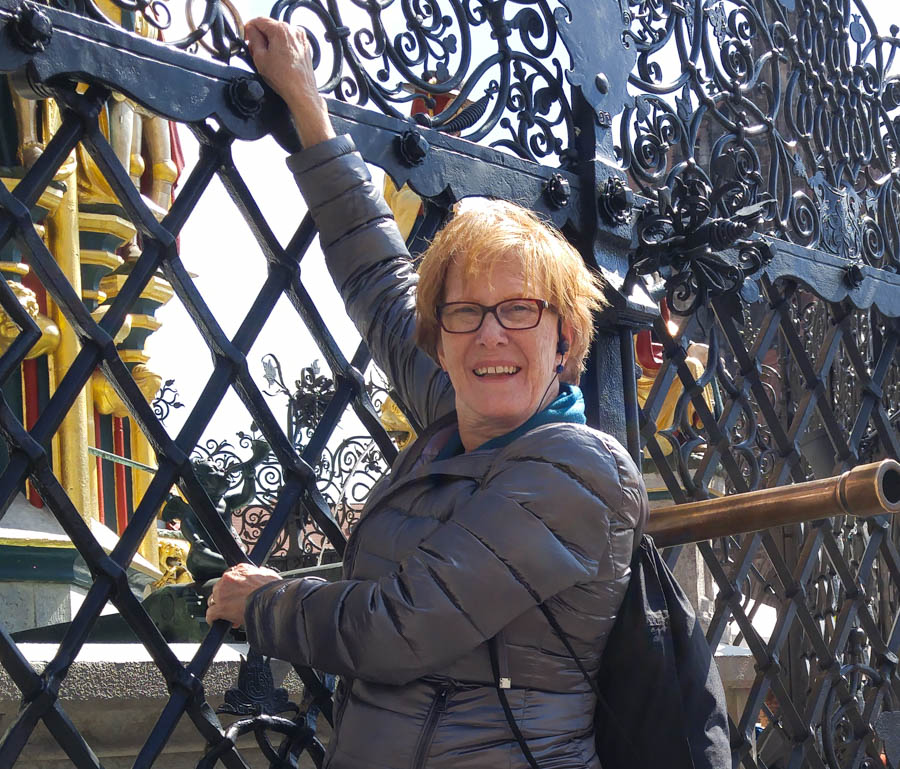
"I am spinning the rings"
Did You Know? - A common sight at the south-west flank of the Beautiful Fountain is one of tourists hanging on to the fountain grille and having their photos taken. According to a local legend, if you turn the “golden ring” (this ring gets replaced due to wear and tear and on one occasion it was a black ring) on the grille three times and make a wish, your wish will come true. Of course this gets exaggerated along the way and a tour director’s take is that you will return to Nuremburg. Does it work?
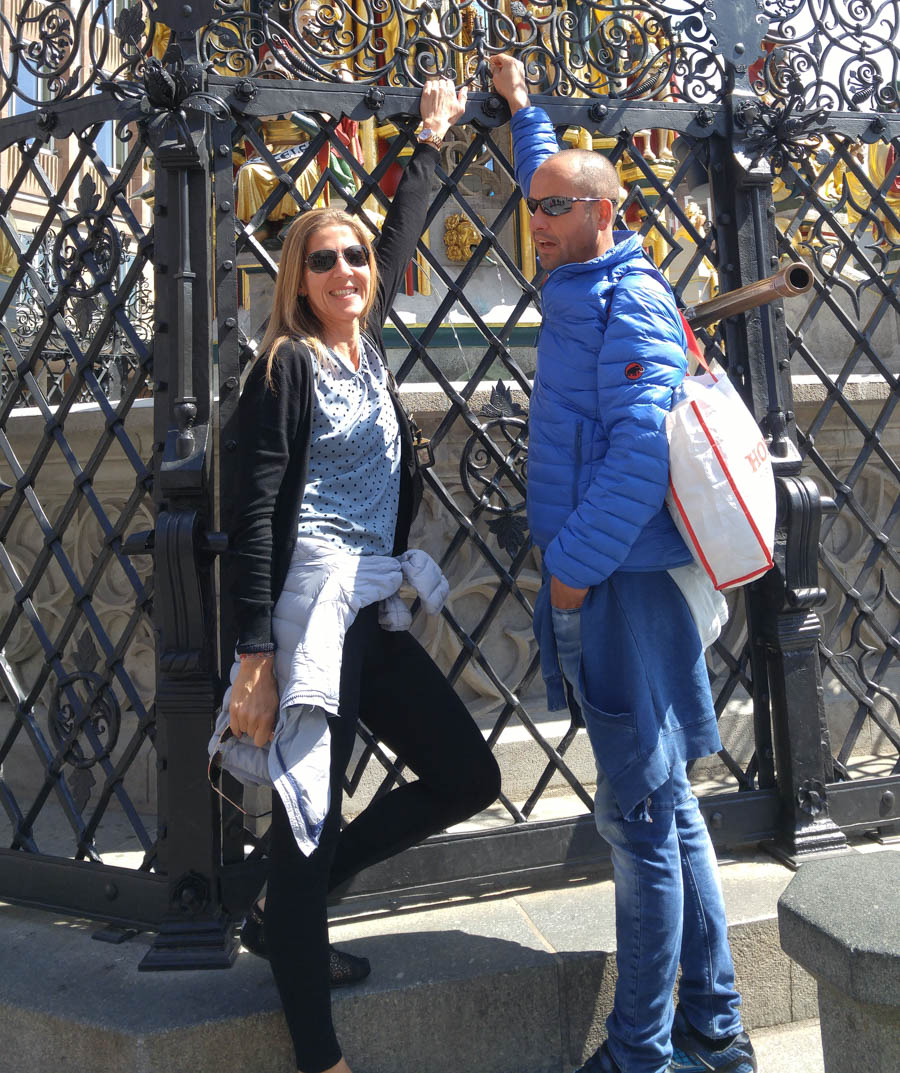
Spinning for luck!

One more time

Love to play in the water


Must climb up again!
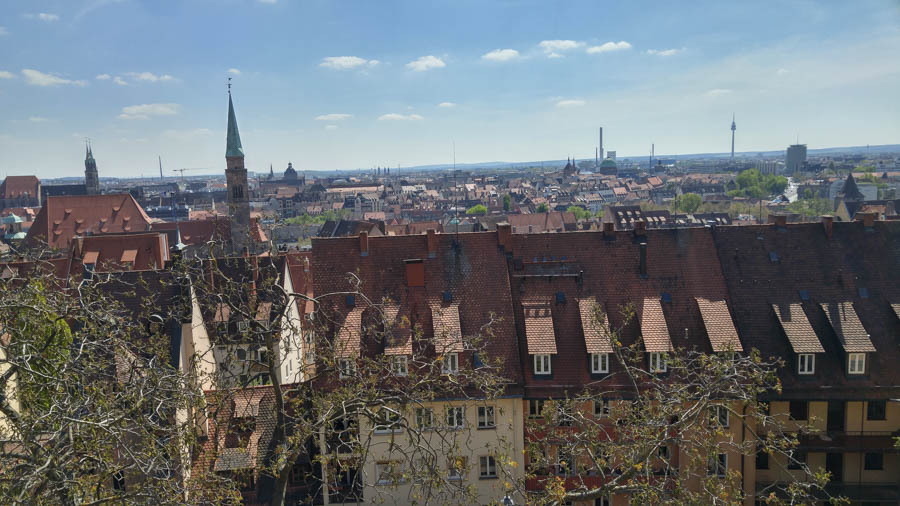
Wonderful view of the city

It was a beautiful day
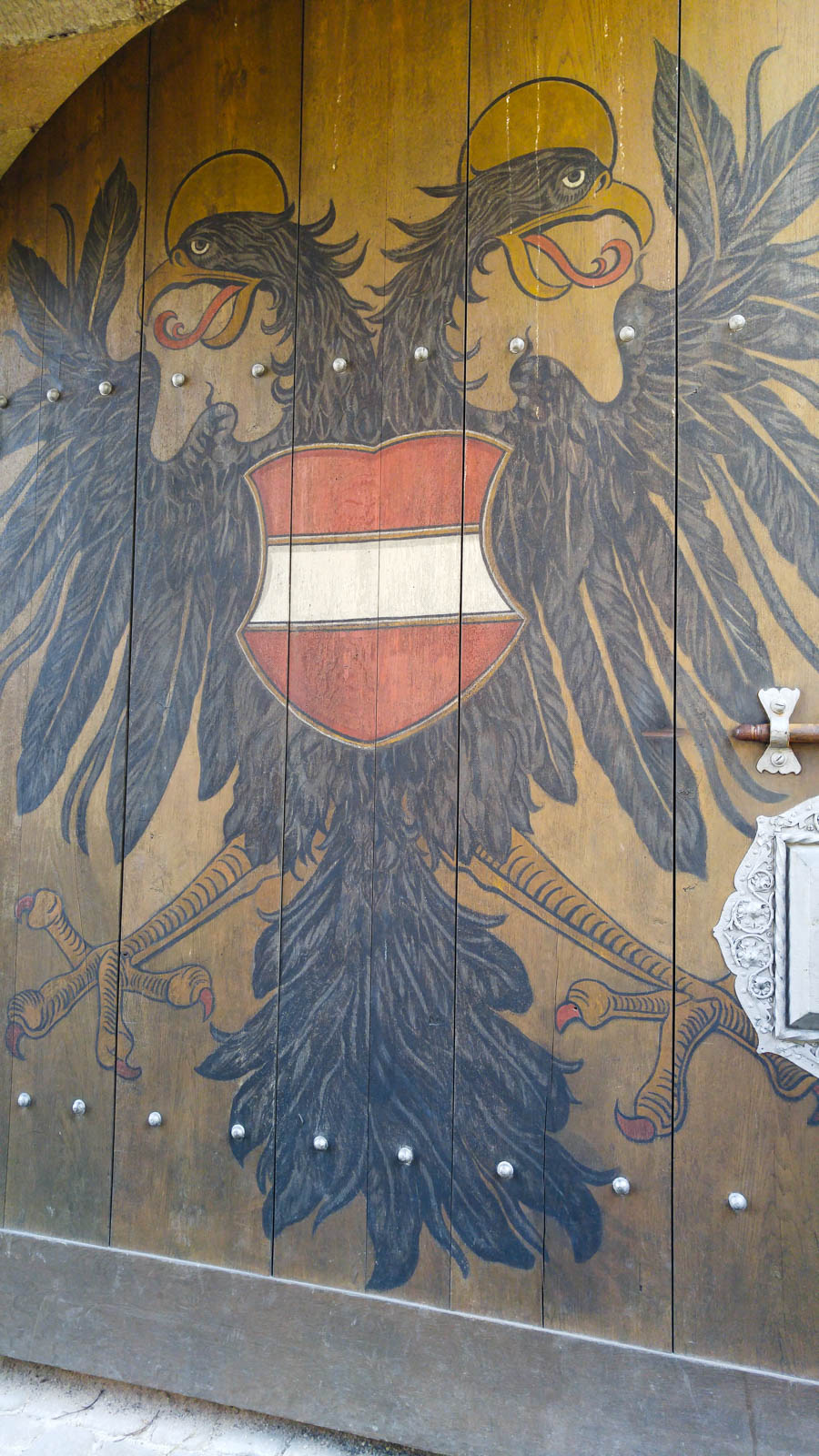
What is behind the door?
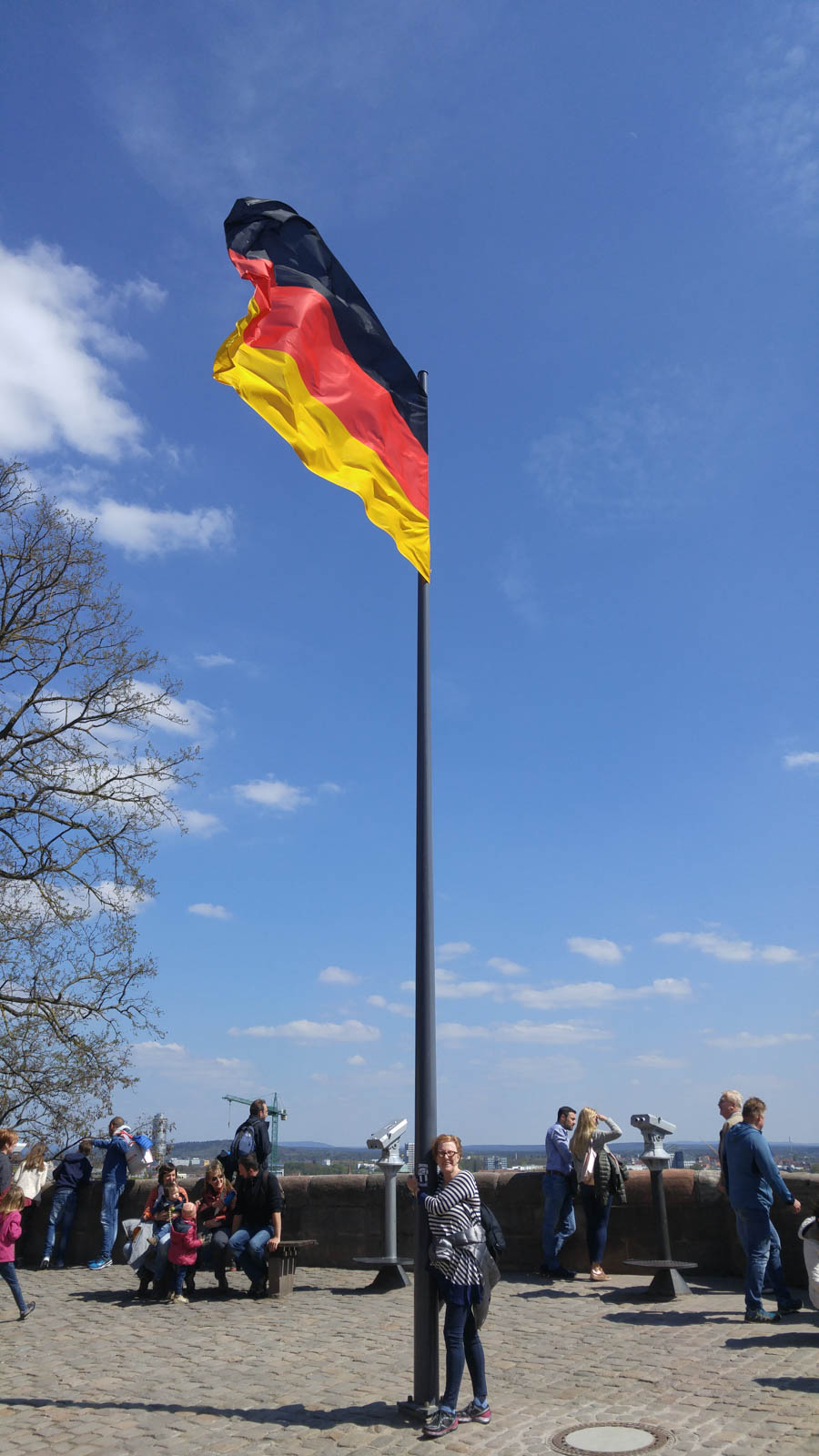
Pole dancing? Nope! Just posing!

Long way down


From the fountain to the church was a quick walk

Church of Our Lady
Did You Know? - The church was built in the grand market, in place of the former Jewish synagogue, which was destroyed during the pogrom of 1349 (which followed an outbreak of Black Death). The architect was probably Peter Parler. Charles IV wanted to use the Frauenkirche for imperial ceremonies, which is reflected in the porch with the balcony, and in the fact that the church is relatively unadorned except for the coats of arms of the Holy Roman Empire, the seven Electors, the town of Nuremberg, and the city of Rome, where the Holy Roman Emperors were crowned.
Charles IV's son Wenceslas was baptized in the church in 1361, on which occasion the Imperial Regalia, including the imperial reliquaries, were displayed to the people. Beginning in 1423, the Imperial Regalia was kept permanently in Nuremberg and displayed to the people once a year on a special wooden platform constructed for that purpose.

Vaulted ceilings seemed to be reaching the sky
Did You Know? - The Frauenkirche ("Church of Our Lady") is a church in Nuremberg, Germany. It stands on the eastern side of the main market. An example of brick Gothic architecture, it was built on the initiative of Charles IV, Holy Roman Emperor between 1352 and 1362. The church contains many sculptures, some of them heavily restored.
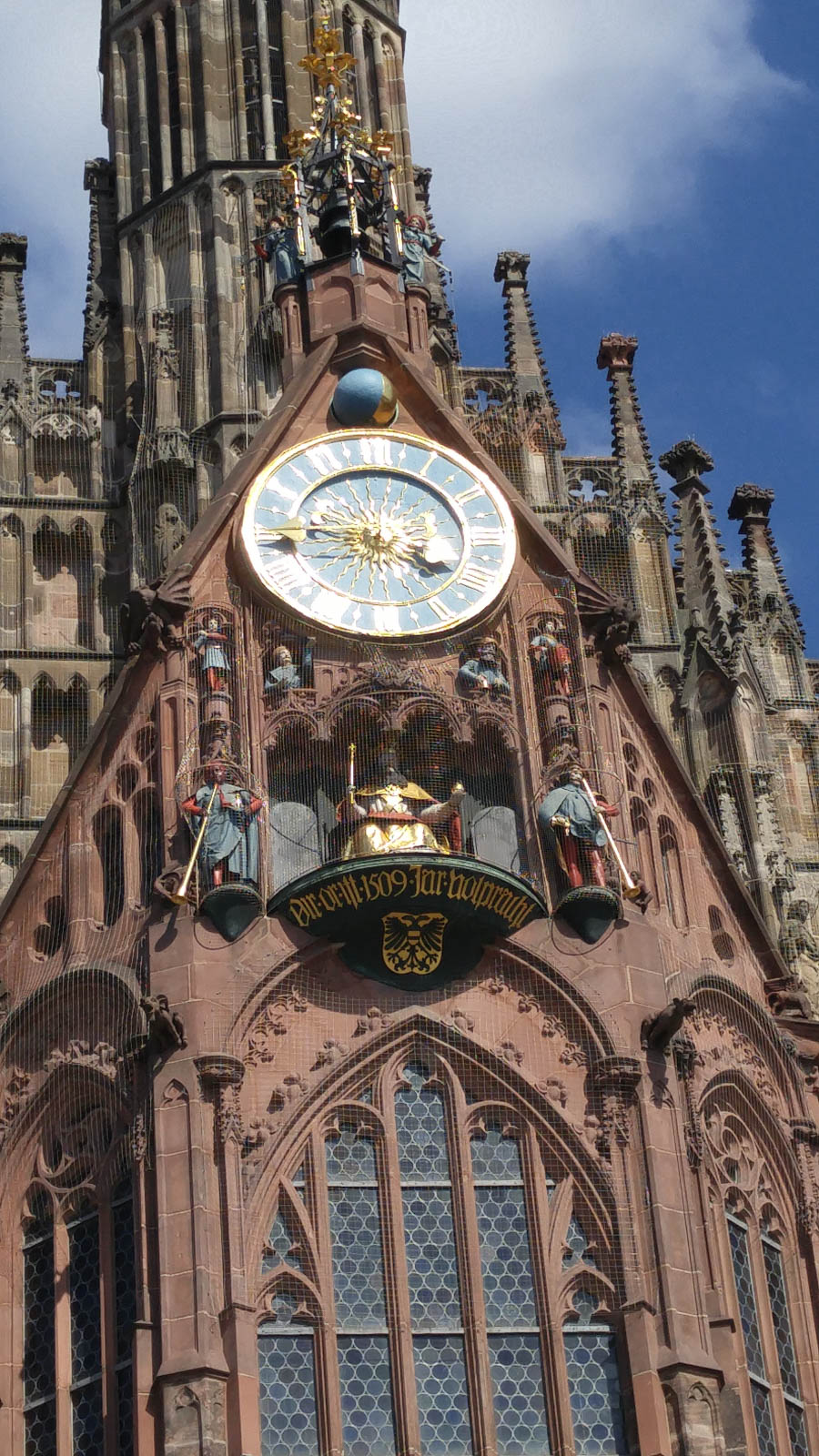
The church was quite ornate with an animated clock
Did You Know? - One of the most notable features of the church is the Männleinlaufen, a mechanical clock that commemorates the Golden Bull of 1356. The clock was installed in the church in 1506. The Holy Roman Emperor is shown seated with the prince-electors surrounding him.
The clock mechanism is activated at midday, when a bell is rung to start the sequence and is followed by the trumpeters and drummer. Then there is a procession of the electors around the figure of the Holy Roman Emperor.

Looks like a wedding is going to be underway soon

Our Lady in 1696... She ages well!
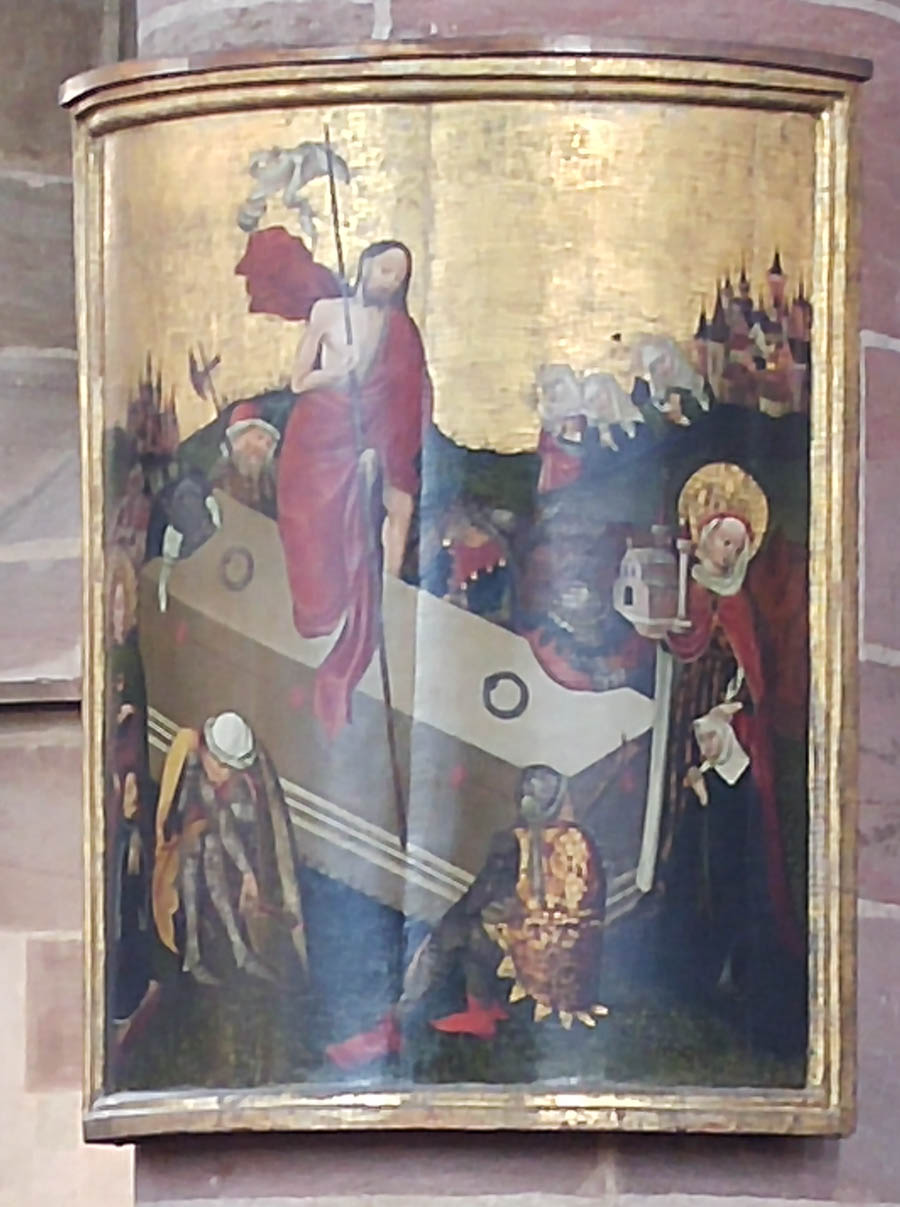
Well preserved

Darn... Must head for our ship!

Trees will grow anywhere

Smile... Your on candid camera

Indeed... One foe the road!
Did You Know? - One huge difference between an ocean cruise and a river cruise are all the locks along the rivers. Most river cruise ships are designed in such a way not to waste any space and just fit into the locks.
For example the lock width along the Rhine Main Danube Canal is 12 meter, so all ships can have a maximum width of 11.40m. That leaves exactly one foot of space to the right and left if a ship enters a lock.
Therefore they sometimes bump into the walls, which may be very unpleasant at night. That is one of the little details most operators or travel agents do not mention. But on the other hand, as you can't avoid the locks, try to see it as being part of the whole thing.

Going up!

We are heading to
Regensburg, Germany arriving midday
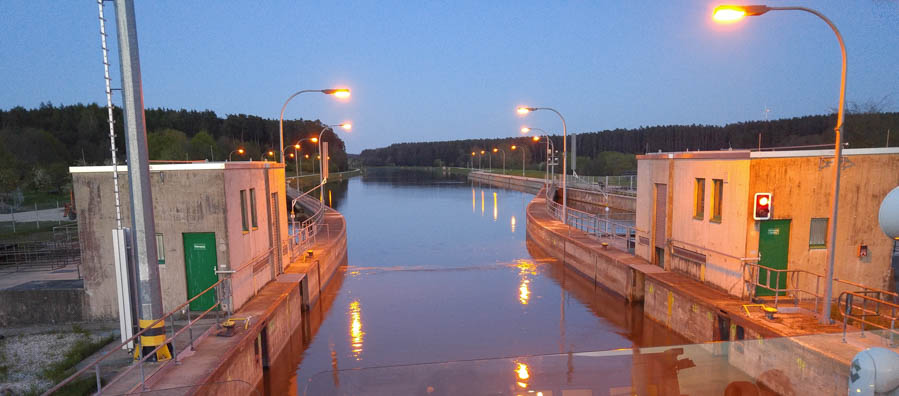
Goodbye Nuremberg

Next stop Regensburg, Germany
located in Bavaria (Page Fourteen)